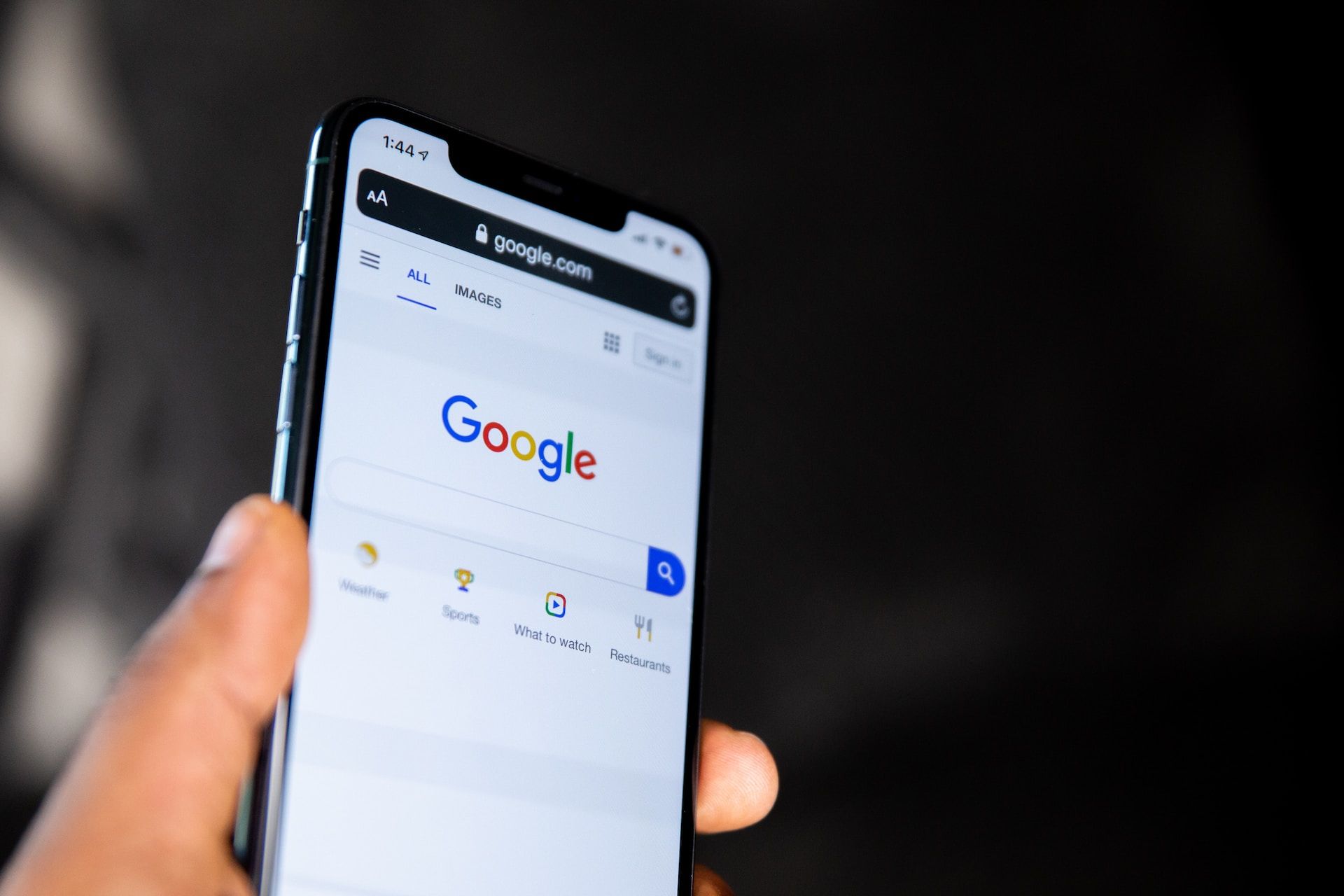Pay-per-click (PPC) is a hot topic in the industry - and for good reason.
88% of buyers use an internet search to research vendors and their solutions. Therefore, staying at the top of the search engine results page is a priority for many B2B companies.
A PPC ad campaign allows you to easily stay at the top of the results while increasing brand awareness and generating qualified leads.
- What is pay-per-click (PPC)?
- The benefits of PPC
- Top PPC platforms
- Steps for pay per click
- Top tips for successful PPC
What is pay-per-click (PPC)?
PPC is a marketing tool that allows you to show short, specific ads to search engine users, to persuade them to click on your site.
A quick auction system determines if your ad shows up in the search results and you only pay when someone clicks on your ad. If you aren’t organically ranked high in the search results with search engine optimization (SEO), then investing in PPC or search engine marketing (SEM) can allow you to appear at the top of the results.
PPC works by allowing you to bid on a keyword (or keywords) that people search. The bid isn’t the only thing that determines if you get an ad spot though, the relevance of your ad to the search is also taken into account. You are always in control of your bid and can track which keywords are working well.
What are the benefits of PPC?
There are many benefits of a successful PPC strategy in B2B marketing strategy. PPC is more than just being at the top of search results - it can also increase brand awareness (by up to 80%), return on investment (ROI), and web traffic.
Always active
Although you and your team are only in the office (or home office) so many hours a day, PPC is always there when someone searches a relevant keyword. This means once set up, your PPC ad will show without much upkeep - but you are always in control of your strategy and can change your bid or keywords whenever you want.
Specific targeting
PPC allows you to connect with business buyers who are searching for your products or services - even if they don’t know it yet! This type of campaign is less aggressive as you are just helping people who are looking for your company to find it.
As well as keywords, it is also possible to target specific demographics using PPC. So, if you know the demographic of your target audience then you can target them specifically - which increases conversion rates and ROI. This is particularly important for B2B companies as audiences tend to be more niche. Targeting allows you to save money as irrelevant audiences won’t see (and therefore click) your ad.
Increase leads
B2B companies rely on looking for more qualified leads. Their products and services tend to be more niche than B2C - meaning B2B leads are harder to find. The longer sales cycle in B2B further emphasizes the importance of high-quality leads.
PPC helps with this by allowing high-quality leads - those who are searching for things related to your products or services - to find your website (and contact details).
Budget control
Using PPC ads means always being in control of your budget as you can easily change your bid whenever you need to. You can also choose to spend on less competitive keywords if this suits your budget better.
Plus, due to the nature of PPC, you only pay for direct clicks (and visitors) to your website.

Top PPC platforms
Each PPC platform is different so it’s important to be aware of the differences and choose the right platform for your company and budget. This section will be dedicated to comparing the platforms.
Google Ads
With over 3.7 billion searches a day, Google is the top platform for a reason. Its popularity as a search engine will likely get you more attention than anywhere else - but not without the downside of popularity.
The competition for keywords is much greater on Google Ads and you are likely to pay a higher rate for ads on Google as the cost-per-click (CPC) rate is calculated by the quality of the ad and the competition volume.
Bing Ads
Bing Ads isn't quite the giant that is Google Ads, but it does power ads on both Bing and Yahoo!. So investing in Bing Ads is almost a two-for-one deal! The CPC is calculated the same way as Google Ads but because of the lower competition, prices are usually lower for keywords.
Bing Ads also allows you to import ad campaigns from Google Ads - streamlining the process. But don’t forget to edit your campaign once it’s in Bing Ads! This is important as keywords may have slightly different search volumes and you will likely need to adjust your bid (usually down).

Steps for PPC
Now that you know the ‘whys’ of PPC, you may want to know the ‘hows’ of running a PPC ad campaign. Well, you’re in luck! This section outlines 5 steps for successful B2B PPC.
Keyword research
The first step to any PPC campaign is keyword research. It’s important to find high-value keywords that relate to your company’s products or services.
Here are a few questions to ask yourself when researching keywords:
- What is my target audience searching for?
- What words are my competitors targeting?
- What words relate to the company’s product/service?
To target a more specific audience it’s beneficial to use long-tail keywords. These are search phrases with at least three words and allow a much more niche target - great for B2B companies as they indicate more qualified leads.
Examples of long-tail keywords include:
- top [keyword] B2B
- [keyword] service provider
- best [keyword] supplier
Many PPC services allow you to use negative keywords to avoid accidentally targeting an irrelevant audience. This means you won’t appear when people search that term. For example, if you offer business card printing but not flyer printing you could use ‘flyer’ as a negative keyword.
Once you’ve thought of some keywords internally, you should check them against a keyword research tool - such as Google Ads Keyword Planner or another tool. Here, you are looking to see how many searches that keyword gets and how high the competition is. Remember, the higher the competition, the higher the CPC tends to be. Google Ads can also recommend keywords.
It can be useful to categorize your chosen keywords into the following groups:
- Generic: keywords relating to products/services offered.
- Branded: words that relate to your company.
- Competitor: keywords relating to your competitors.
- Related: words similar to the words on other lists.
All chosen keywords should be related to each other and shouldn’t venture too far out from the core message.
Planning a campaign
A PPC campaign typically has multiple ad groups, each with its own set of keywords. Ideally, each ad group should focus on a different product or service that your company provides.
Splitting your campaign up this way allows you to specifically target groups who are searching for that product/service. This makes your ad more successful as it targets your audience based on what they are looking for.
Another way to split up your campaign is using stages of the marketing funnel. This is particularly important in B2B due to the long purchase cycle. Non-branded searches are likely to be at the first few stages of the funnel: awareness, and interest.
Whereas branded searches may be from those in the consideration or intent phase. It is important to differentiate these into ad groups to increase the campaign’s success and gain more insights into what works best. This may mean having different ad groups for research, consideration, and conversion.
Ad copy
Thinking through the ad itself is important in drawing people in. There’s no point in appearing at the top of the search results if your ad is unappealing, as no one will click on it.
Usually, a search ad consists of a heading and a description. You should make these eye-catching - but also specific for each ad group. The description should be detailed and tell your audience exactly what you are offering. It should show them the value of your offer and your credibility. Use words like ‘award-winning’ or ‘best-seller’ where possible.
You should also try to include a call to action (CTA). These will encourage your audience to do something, instead of passively browse. Some examples of a CTA for B2B companies are:
- Get more information.
- Contact us today!
- Call our sales team now!
You can A/B test different copy and CTAs - which will allow you to see which ads work best and which need some improvements.
It may also be helpful to prequalify customers. To do this you could include price points that will help you to avoid unqualified leads as those who don’t have the budget for your product or service won’t click. This will save you time and money by disqualifying unqualified leads quickly.
Landing page
Once your audience clicks on your ad, they’ll be greeted with your landing page. While you could use an existing page on your website as a landing page, tailoring it to your ad and audience increases the conversion rate. This is because you can make sure your audience receives the information they were looking for straight away.
The headers and descriptions should mirror those of your ad, and any CTA in the ad should also be included on the landing page. If your ad offers a free trial, then your landing page should include the form needed to receive that free trial - if not then people likely won’t go looking for it and will just leave your site.
The landing page should give the audience what they were looking for when they clicked on your ad - whether that be information on your product or service, contact information, or a free trial. So, when designing your landing page you should think about the needs and expectations of your audience.
Measurement
Last - but by no means least - measurement. Once you’ve launched your campaign using the steps above - it’s important to measure the results. This will allow you to make changes to enhance your campaign’s results.
Linking up your Google Ads and Google Analytics accounts before going live with your PPC campaign will give you a greater insight into how well your campaign is working.
Google Ads also allows you to create experiments, where you can launch a variation of your ad to A/B test it, and see how it does against the original. You could also track how well two different landing pages do to determine the best or try narrowing down your audience.
You should aim to check in on your PPC ads every week and make appropriate changes when necessary (when the data shows they’re needed). However, due to the long sales cycle in B2B, it may take a few months to see significant impacts on some metrics, such as conversion rates.
With this, you should have everything you need to run a PPC campaign for your B2B company. But stick around as a few more tips are coming up next!
Top tips for successful PPC
Here are a few extra tips to ensure a successful B2B PPC campaign:
- Build a campaign for your buyer: Who normally buys from your company? Is it the CEO, someone in a buyer role, or someone who will use your product/service? Try to specifically target your ad towards them to make the biggest impact.
- Keep in mind the length of your sales cycle: How long is your sales cycle? The length of your average sales cycle will affect your ROI - meaning it may take several months to see a return.
- PPC can create assisted conversions: Your customers may start their journey at a PPC ad but may convert through another channel (such as an organic website visit). Importantly, your ad played a role in their conversion.
- Target acronyms: Using common acronyms in your industry as keywords can boost your visibility, as your audience is likely to search using them.
Next steps
Other types of PPC advertising may come in handy after successfully running a search PPC campaign. These include display ads and paid ads on social media such as Facebook and Linkedin.
A search PPC campaign is the easiest to run for beginners, but investing in these other PPC types may also be beneficial to B2B companies looking to invest further in paid advertising.



 Follow us on LinkedIn
Follow us on LinkedIn




